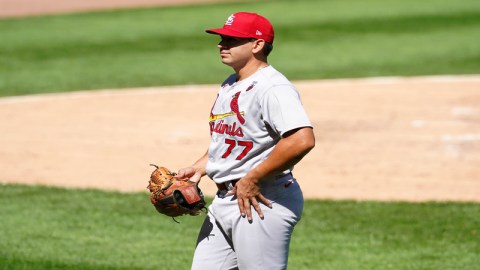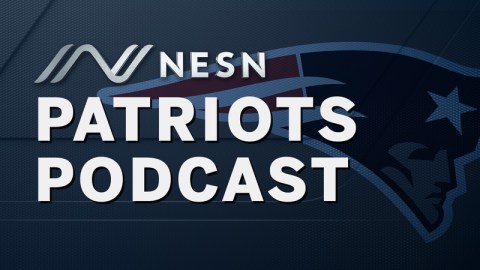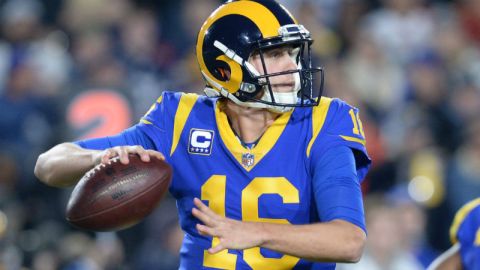While looking back to April 2000, head coach Bill Belichick appeared dumbfounded that Michigan quarterback Tom Brady could still be on the board when the Patriots were approaching their fifth-round pick.
But Belichick had to rationalize for a moment. He recalled Brady’s collegiate career, in which he was a masterful quarterback as a junior and a team captain as a senior. Yet, Michigan head coach Lloyd Carr kept yanking the starting job away from Brady during his senior season, instead favoring highly touted prospect Drew Henson.
Belichick said he could only go by what he saw of Brady on film, but the fact that Brady couldn’t keep his job was a red flag. Why, Belichick wondered, did they keep trying to replace him?
“We saw Tom time and again his senior year start the game off well, and so many times Tom would come back in, and rescue the situation, and pull out the win for Michigan against great competition, the biggest game,” Belichick said Tuesday on ESPN’s hour-long special, The Brady 6.
But of course, in the fifth round, the Patriots selected Boise State tight end Dave Stachelski and Missouri defensive tackle Jeff Marriott. One round later, Belichick finally got it right — after every team managed to get it wrong a total of 198 times.
ESPN’s feature told the story of the 2000 draft, most notably the six quarterbacks who were taken before Brady. And then it compared the careers of all seven of those signal-callers. It featured exclusive interviews with Brady, Belichick, Patriots owner Robert Kraft, former Patriots vice president of player personnel Scott Pioli, Carr, former Michigan teammate Aaron Shea, former 49ers head coach Steve Mariucci, former Ravens head coach Brian Billick and Tom Brady Sr.
Brady opened the show by naming the six quarterbacks who were drafted ahead of him — Chad Pennington (first round, No. 18 overall), Giovanni Carmazzi (third round, No. 65 overall), Chris Redman (third round, No. 75 overall), Tee Martin (fifth round, No. 163 overall), Marc Bulger (sixth round, No. 168 overall) and Spergon Wynn (sixth round, No. 183 overall). Interestingly, Carmazzi (who never played a regular-season down), Martin and Wynn combined to complete just 76 passes for one touchdown and eight interceptions in their NFL careers.
The feature — which also had exclusive interviews with Henson, Pennington, Redman, Martin, Bulger and Wynn — went into detail about the difficulty of Brady’s senior season and his depth-chart battle with Henson. Though Carr had traditionally given the job to the player with more experience, he used a rotation between his two quarterbacks despite Brady’s superior play.
Shea, one of the stars of the program, said Brady was the “best quarterback on the team, bar none. Ask any guy on that team.” Brady possessed the intangibles — he was even dubbed as “The Comeback Kid” at Michigan — but he wasn’t afraid to admit Henson was faster, stronger, quicker, more elusive and had a better arm.
Midway through his senior season, Brady got his starting job back on a full-time basis and led a 10-point fourth-quarter comeback to beat Penn State. The feature showed an archived television interview with Carr, who pronounced, “There is no greater leader in intercollegiate athletics than Tom Brady,”
The show also centered around Brady’s pre-draft process, and it had footage of his weigh-in, which portrayed him as a skinny, out-of-shape kid who hardly resembled a professional athlete.
Mariucci, who coached Brady’s hometown 49ers during the 2000 draft, said the quarterback was “a tall gangly kid, looked like he hadn’t ever seen a weight room.” Mariucci also referenced a local combine that the 49ers ran before the draft that Brady attended. But Mariucci said Brady “did nothing to make us say we needed to draft this guy.” Instead, the 49ers went with the athletically gifted Carmazzi.
Later, Mariucci cracked, “If I would have drafted him, I probably would have still been coaching there.”
A tearful Brady and his father also recalled his painful slide down the draft board. Brady Sr. said he was told his son would be a second- or third-round pick before the draft, and it created a very uncomfortable feeling at the Brady household throughout the day. It didn’t help when the draft broadcast showed that Wynn completed 47 percent of his passes as a senior at Texas State and had 12 touchdowns and 13 interceptions.
“It was just a tough day, you know?” Brady said.
From there, Brady entered Patriots training camp as the fourth-string quarterback, but two weeks into the summer, he called his agent to say he was ready to buy a house. Brady laughed at the notion that he wouldn’t make the team and joked that he just wanted to get a good interest rate.
Belichick admitted keeping Brady as the fourth quarterback was a “wasted roster spot,” but they couldn’t risk putting him on the practice squad because he could have been claimed off waivers. Shea also recalled a time when Brady was completely sure that he’d take Drew Bledsoe‘s job.
Brady’s dedication to prove people wrong dated back to each of his football stops. As a freshman in high school, Brady never played a down for a team that went 0-8 and didn’t score a single offensive touchdown, according to Brady Sr., and he only played as a sophomore after the starter quit.
And then there was his whole ordeal in college. Brady was passionate about the fact that if he didn’t practice well Tuesday, Wednesday and Thursday, he didn’t know if he’d start Saturday. He said that’s the same approach he has always taken in New England.
“I always want to feel like I’m the best quarterback for this team,” Brady said. “I want to earn it every single day.”



